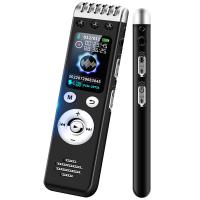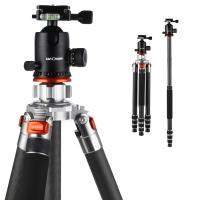Where Does Sound Recorder Store?
When it comes to understanding where your sound recordings are stored, the answer varies based on the device and application you are using. Whether you’re an avid voice memo user, a journalist relying on digital recorders, or an audio engineer working in a studio, knowing the storage locations of your recordings is crucial for efficient file management and easy access. This article will delve into the different storage options for sound recordings on various devices and applications, highlight common issues and their solutions, and provide tips for managing your recordings effectively.
Storage Locations on Different Devices

1. Smartphones:
- iOS (iPhone, iPad): On iOS devices, recordings made through the Voice Memos app are typically stored in the device's internal memory and can be accessed through the app itself. They are often backed up to iCloud if the service is enabled, ensuring you can recover them if something happens to your device.
- Android: Android devices vary greatly, but commonly sound recordings are saved to internal storage or an optional SD card, often within a folder labeled "Recording," “Voice Recorder,” or under the app's name. Some Android apps also offer integration with cloud storage services like Google Drive or Dropbox.
2. Computers:
- Windows: On a Windows PC, the default Sound Recorder app usually saves files in a directory like “Documents” or “Music” under a sub-folder named “Sound Recordings.” Third-party applications may store recordings in custom directories specified by the user.
- Mac: For Mac users, the QuickTime Player saves audio recordings usually in the “Movies” folder under the user’s home directory, but this can be changed. Other applications, like GarageBand, may store recordings in the “Music” directory or within project files.
3. Digital Voice Recorders:
- Dedicated digital voice recorders typically save recordings to their internal storage or to an external SD card. The files are often accessible by connecting the device to a computer via USB or by directly inserting the SD card into a card reader.
4. Professional Recording Equipment:
- Professional audio recording equipment, including field recorders and studio setups, stores files on internal drives, SD cards, or direct-to-computer interfaces. The exact location can be user-defined within the system settings of the recording device or software.
Common Issues and Solutions

1. Storage Location Uncertainty:
Users often face challenges locating their recordings due to unfamiliar storage paths or vague app instructions. Detailed user manuals and app settings should be consulted to understand where files are saved, and users should set a default storage path that is easy to remember.
2. File Accessibility:
Accessing files can be another hurdle, particularly when transferring recordings between devices. Ensuring proper driver installation for digital recorders and utilizing cloud services for synchronization can mitigate these issues. Moreover, recording apps with in-built sharing options can greatly simplify this process.
3. Storage Space:
Running out of storage space is a frequent problem, particularly on devices with limited internal memory. Regularly transferring recordings to cloud storage or external drives and clearing out unneeded files can help manage space efficiently.
Tips for Managing Your Recordings

1. Organize Regularly:
Keep your recordings organized by creating a structured folder system, naming files descriptively, and tagging them with dates or relevant keywords. This can save significant time when searching for specific recordings.
2. Backup Consistently:
Backing up your recordings is essential to prevent data loss. Utilize both cloud backups and physical backups (like external drives) to ensure the safety of your recordings.
3. Utilize Cloud Services:
Cloud storage services like Google Drive, Dropbox, iCloud, or OneDrive offer automatic syncing and redundancy, ensuring that your files are safe and accessible from multiple devices.
4. File Format Considerations:
Choose an appropriate file format for your recordings. Formats like WAV provide high quality but take up more space, while compressed formats like MP3 are more storage-efficient. Depending on your needs, select a format that balances quality and space considerations.
5. Leverage App Features:
Make full use of features offered by recording apps, such as noise reduction, editing tools, and sharing options, to enhance the quality of your recordings and streamline your workflow.
6. Regular Audits:
Periodically review your recordings to delete unnecessary files and move important recordings to long-term storage solutions. This keeps your current device's storage uncluttered and ensures important recordings are kept safe.
Understanding where your sound recordings are stored and how to manage them effectively is crucial for anyone who relies on audio recordings in their personal or professional life. By familiarizing yourself with the storage locations and management practices for various devices and applications, you can ensure that your recordings are accessible, secure, and well-organized. Regular backups, efficient use of cloud services, and thoughtful organization will safeguard your valuable audio files and streamline your recording workflow. Whether you’re a casual user or a professional, these strategies will help you maintain control over your sound recordings, prevent data loss, and ensure that your audio files are always at your fingertips when you need them.









































There are no comments for this blog.